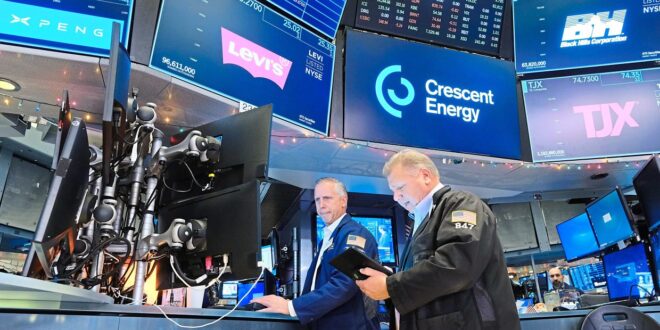WASHINGTON: The bulk of policymakers at the Federal Reserve’s (Fed) last meeting were concerned about the risks of cutting interest rates too soon, with broad uncertainty about how long borrowing costs should remain at their current level, according to the minutes of the Jan 30-31 session.
“Participants highlighted the uncertainty associated with how long a restrictive monetary policy stance would need to be maintained” to return inflation to the Fed’s 2% target, said the minutes, which were released on Wednesday.
Whereas “most participants noted the risks of moving too quickly to ease the stance of policy,” only “a couple pointed to downside risks to the economy associated with maintaining an overly restrictive stance for too long.”
US stocks fell slightly following the release of the minutes while the US dollar was little changed against a basket of currencies. US Treasury yields rose.
Fed policymakers also “generally” agreed they needed “greater confidence” in falling inflation before considering cutting rates, the minutes said in language that seemed to emphasise a careful and perhaps slower approach to rate cuts that market participants had expected to commence in June.
“Some participants” cited a risk that progress on inflation could outright stall if the economy continued to perform as strongly as it has, the minutes said.
After the publication of the minutes, investors in contracts tied to the Fed’s benchmark policy rate continued to see the central bank beginning to reduce borrowing costs in June.
“As long as the labour market holds up, the Fed can afford to slow-walk rate cuts. Inflation-fighting is much easier when the labour market cooperates,” said Jamie Cox, managing partner at Harris Financial Group.
The Fed at its January meeting held its benchmark overnight interest rate steady in the 5.25% to 5.50% range set in July, and opened the door to rate cuts once policymakers “gained greater confidence that inflation is moving sustainably” to the central bank’s 2% target.
Fed chair Jerome Powell at his Jan 31 press conference essentially ruled out a rate cut at the March 19-20 meeting, and the minutes suggest it wasn’t a particularly close call.
Data released after the last Fed meeting showed stronger-than-expected job growth and inflation in January.
While those reports have not shifted the overall view among policymakers that inflation will continue to fall this year, they did little to add to the “confidence” policymakers want before easing the tight monetary policy used to battle the worst outbreak of inflation since the 1980s.
Fed staff, meanwhile, took note of a variety of risks, from “notable” vulnerabilities in the US financial system, including falling commercial real estate prices, to the possibility that “reducing inflation could take longer than expected,” the minutes said.
That, in turn, might “slow the pace of real activity” more than expected.
The minutes also noted upcoming decisions on when and how to stop reducing the size of the Fed’s balance sheet, with “many participants” suggesting a start to “in-depth” discussions on balance sheet policy at the March policy meeting.
The rapid easing in financial conditions during the fourth quarter had largely run its course by the end of January. — Reuters
 BeritaKini.biz Berita Viral Terkini di Malaysia
BeritaKini.biz Berita Viral Terkini di Malaysia





